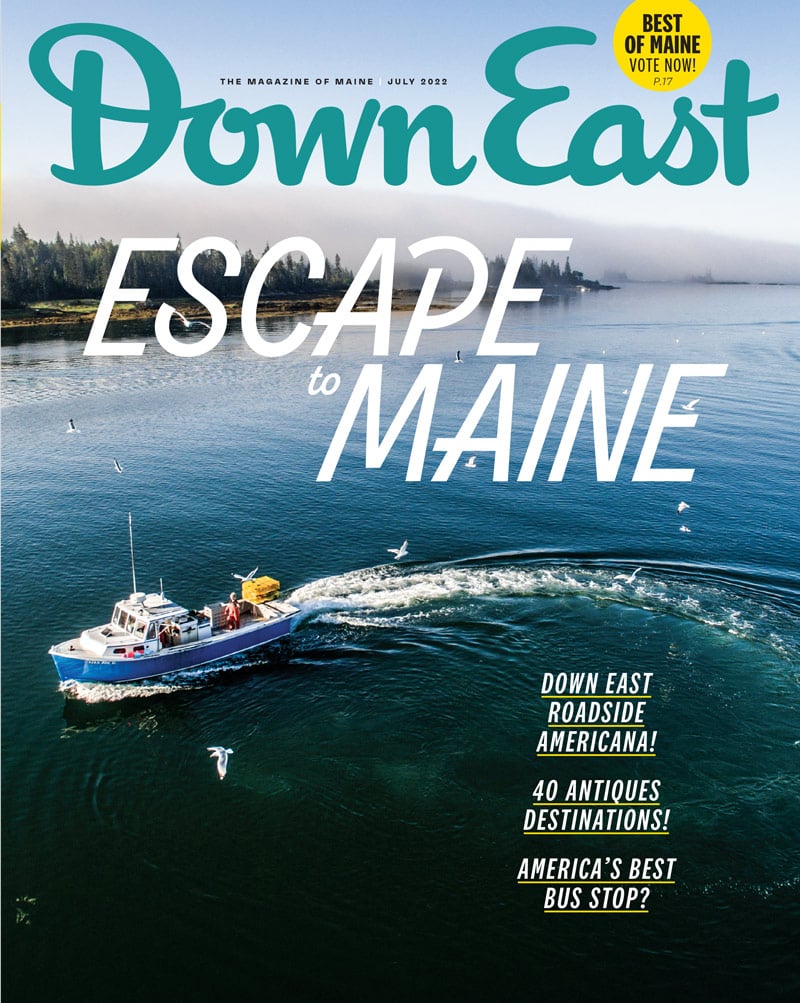By Caleb Jagoda
Photographed by Meredith Brockington
From our July 2022 issue
Four years ago, a few colorful weavings caught Halley Phillips’s eye on Pinterest. She’d dabbled in scrapbooking, painting, and other arts and crafts in the past, and suddenly she was hooked on the idea of making her own dreamlike, kaleidoscopic yarn medleys. She decided to buy herself a loom and began by doing small, flat patterns, teaching herself the basics. It wasn’t until the pandemic hit, in 2020, that she went all in, transforming her South Portland apartment into a de facto art studio and establishing her part-time business, Weavings by Halley. Now, the 28-year-old takes hand-spun yarns, colors them using acid dyes specific for wool, silk, and cotton fibers, and knots them into textured 3D landscapes, abstract depictions of everything from snowy mountain ranges to ponds in springtime to star-flecked galaxies. As a finishing touch, she attaches them to pieces of driftwood from beaches across southern Maine, for hanging on the wall.




Halley Phillips sells her works online and at the Freeport Market Store, and although she’s passionate about her craft, she doesn’t plan on taking it full-time — she also loves her day job as a training and development coordinator at the Restorative Justice Institute of Maine. She completes a weaving every week or so, and because she values originality, each is one of a kind. Unlike with other wall art, appreciating the end result — the way the fibers overlap and blend together — is a hands-on experience. “My favorite part of weaving is getting to touch the finished pieces,” she says. “To feel the diversity of textures in the yarns is the most meditative part of the process.”
Tell Us More
Halley Phillips

What kind of materials do you start with?
I buy from a lot of people on Instagram who sell their own hand-spun yarn. I like to use any kind of cool-looking yarn I think I can get a lot of texture from. That’s what I really like about it — I can layer as much color as I want into a weaving and it won’t turn to brown, like painting. Reconnecting to my roots and learning more about my family and ancestry has shifted the ways I think and weave. Because of my Nipmuc ancestry, I make sure that in everything I do, I keep the planet in mind. I only use biodegradable and non-synthetic materials to make my weavings. I want to ensure that my art isn’t adding to the earth dying.
What inspires your designs?
In the summertime, growing up in Hartland, my mom would lock the screen door on us and be like, ‘Go have fun!’ I include a lot of greens and flowers in my work, so I think those childhood summers probably added to the inspiration and the colors I enjoy. I’m also inspired by Studio Ghibli, a Japanese animation film company [that produced cult classics like My Neighbor Totoro and Spirited Away]. The light tonals I use are definitely influenced by Ghibli’s fantasy landscapes.
Future goals for your small biz?
Teaching classes could be fun. I’d love to put together weaving kits and go into schools or work one-on-one with individuals. It’d be cool to have the opportunity to teach people that weaving and working with fiber and yarn can be really fun and contemplative.
What’s the balance like between your day job and weaving?
Weaving is therapeutic, a way to balance the heavy emotional lifting at work. I run harm-repair circles and introduce the tenets of restorative justice in schools. It’s draining and rewarding. The enjoyment and fulfillment of creating something different than what my day job is has helped me process issues at work. I don’t know what I’d do without it.




